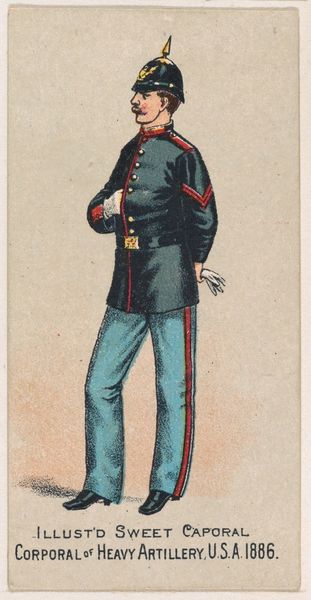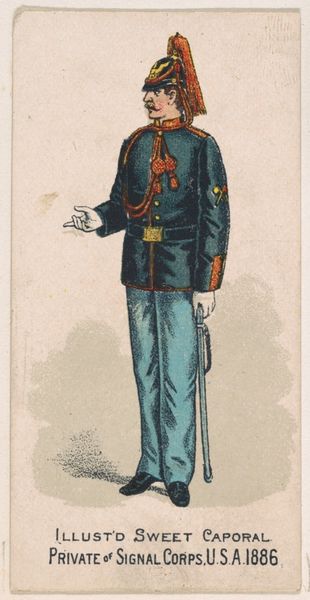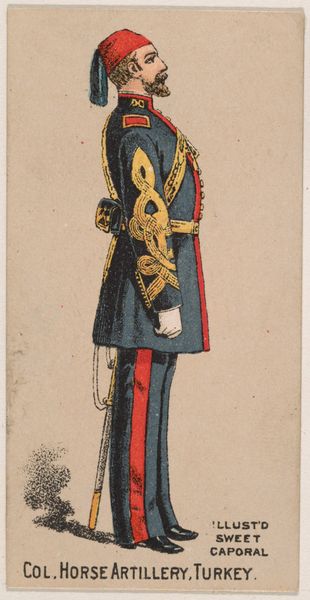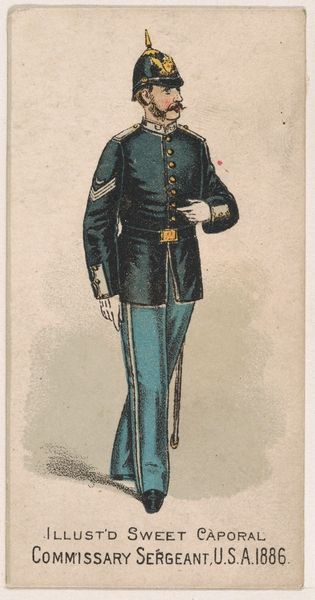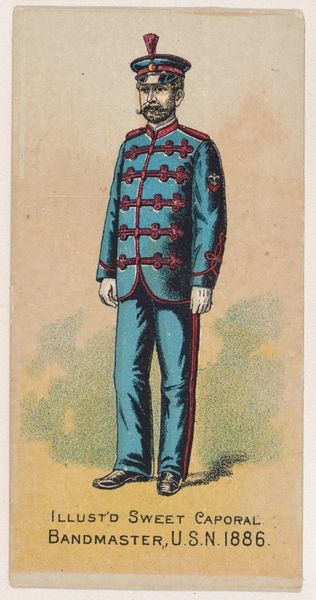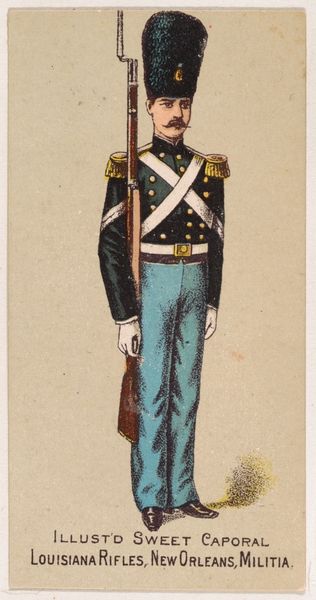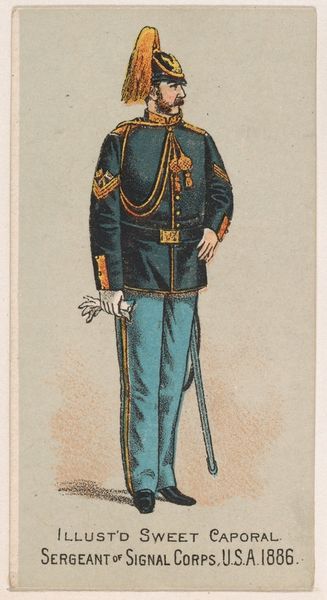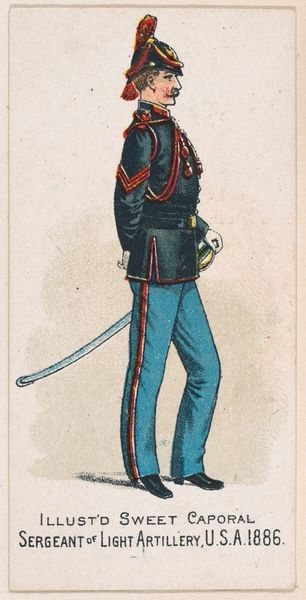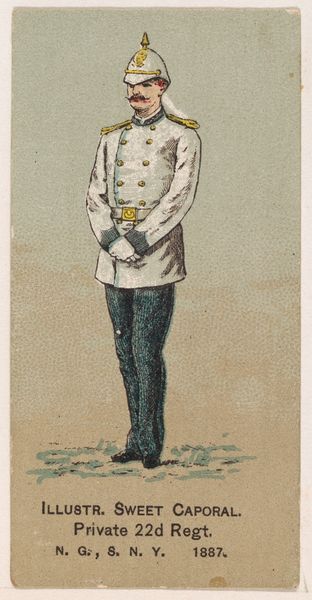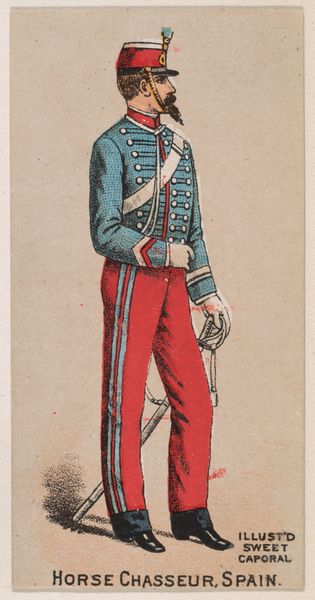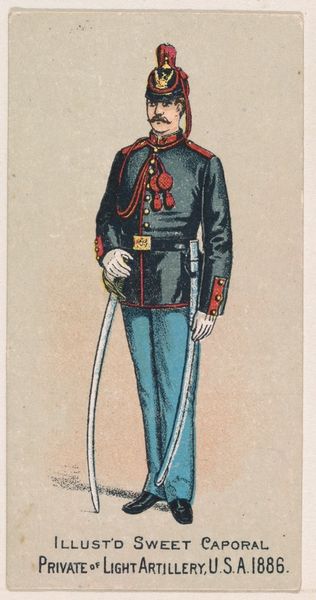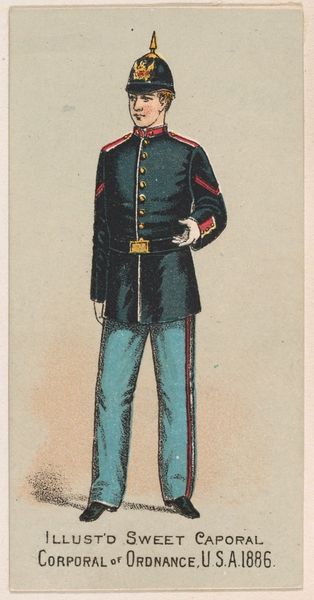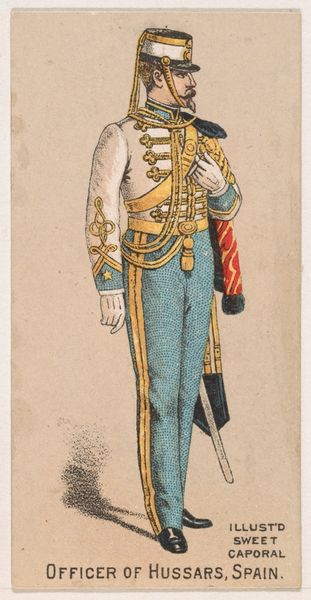
Ordnance Sergeant, United States Army, 1886, from the Military Series (N224) issued by Kinney Tobacco Company to promote Sweet Caporal Cigarettes 1888
0:00
0:00
drawing, print
#
portrait
#
drawing
# print
#
caricature
#
caricature
#
historical fashion
#
academic-art
Dimensions: Sheet: 2 3/4 × 1 1/2 in. (7 × 3.8 cm)
Copyright: Public Domain
Curator: Isn't he dashing? We're looking at a chromolithograph trade card from 1886, part of the "Military Series" put out by Kinney Tobacco Company for their Sweet Caporal cigarettes. It's titled "Ordnance Sergeant, United States Army." Editor: Dashing in a slightly…wind-up toy soldier kind of way, perhaps? There's something about the stiffness of the pose and the high gloss that makes it seem almost mass-produced, which, of course, it was. I imagine these cards were a way of equating virility with military might and smoking pleasure. Curator: Precisely! Imagine collecting these, trading them… It’s fascinating how the everyday object – a cigarette card – becomes a canvas for depicting social values and aspirations. And the level of detail, even with the slight caricature, it suggests a respect, or at least a visual interest, in the precision of military dress. Editor: What interests me is the materiality itself. The inks, the card stock, the printing process. These weren’t meant to last, were practically disposable, and yet here we are, over a century later, dissecting its cultural footprint. Consider the labor involved: the illustrators, the printers, the tobacco workers… it all connects to this small, yet complex object. Curator: That disposable nature is poignant, isn't it? Like a fleeting dream of empire, packaged with nicotine. But there’s a charm in its unpretentiousness. It’s not trying to be high art, but it captures a particular moment with its own subtle artistry. There is a real energy to it, a naivete of the era that speaks to a bold, and perhaps now questionable, sense of national identity. Editor: Exactly! And while its initial value lay in promotion and consumption, its enduring value lies in the stories it can tell about class, labor, and the very tangible processes of production that shaped even fleeting cultural ephemera. It challenges our definitions of value in the art world. Curator: Indeed, a reminder that even the smallest scrap of paper can hold a mirror to grand narratives. I keep picturing someone casually flicking one of these cards onto a table... now held within the hushed galleries of the Met. It’s beautiful in its incongruity. Editor: And a potent reminder that everything, even art, exists within a system of production, consumption, and ultimately, transformation.
Comments
No comments
Be the first to comment and join the conversation on the ultimate creative platform.
